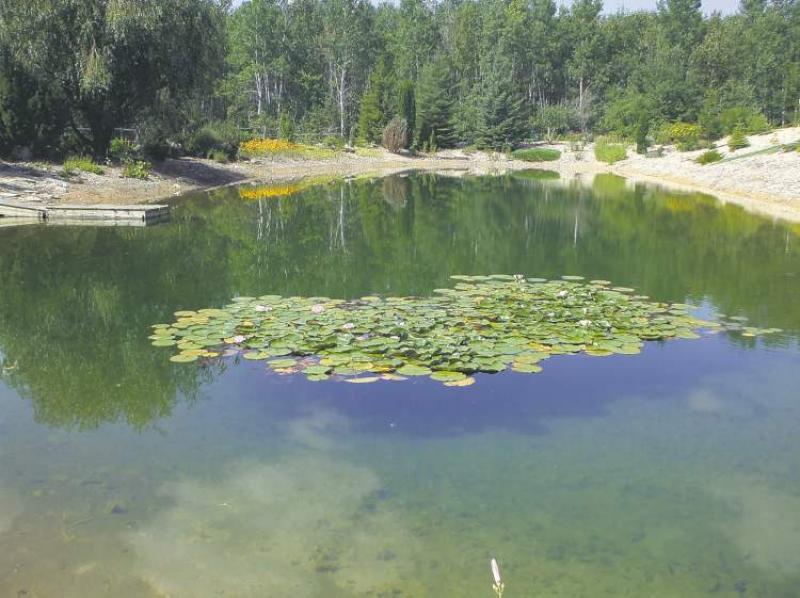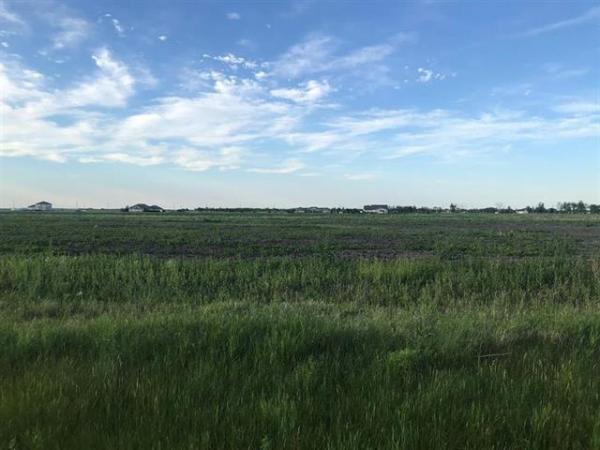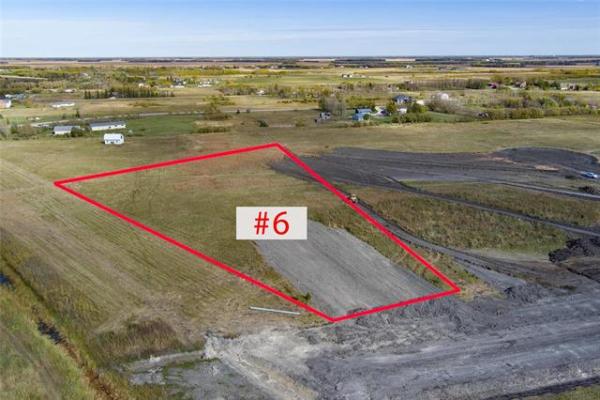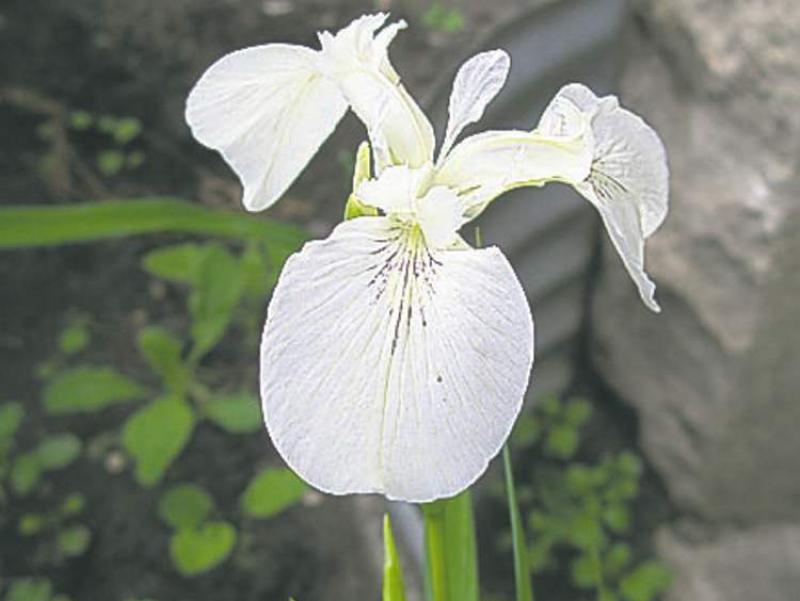
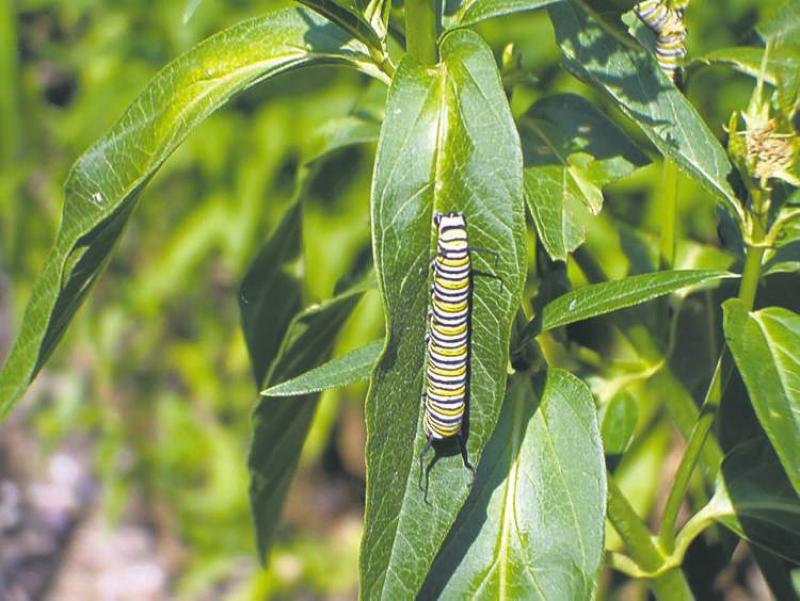
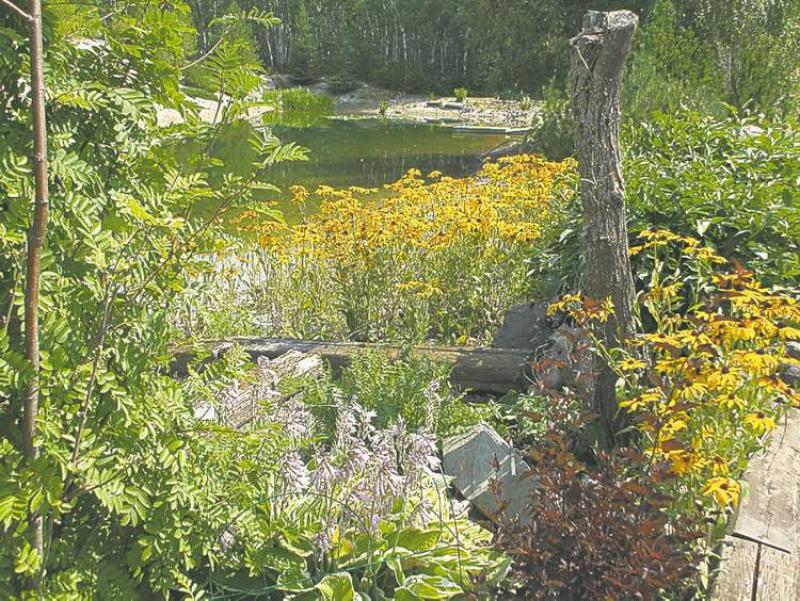
Working with water
MOST visitors on garden tours who come across a garden with a pond long to have one of their own. The sound of water, in particular, focuses our attention -- effectively muting background noise, such as nearby traffic
Any type of water feature, including something as simple as a container water garden, will add dimension to a garden. Start with a waterproof container and purchase a small submersible pump to circulate the water. Situate near an electrical outlet so you don't need to run an extension cord. Eva Pip, an aquatic toxicologist and professor of biology at the University of Winnipeg, maintains a stunning pond on her rural property near Beausejour. Pip is also a well-known advocate for the quality of water in our lakes. She shares some excellent advice in today's column on maintaining a healthy pond.
Lynne Melvin, owner of Riverdale Supply in Carman, has some advice about adding dissolved oxygen products to help the beneficial bacteria in a pond dissolve algae. "Only use a product that has no chemicals or emulsifiers and is entirely safe for plants, humans and pets, such as Bacta Pur, which carries a certificate of quality. Children and pets find water irresistible!"
-- -- --
TODAY, the Manitoba Regional Lily Society will host its Spring Seminar and Annual General Meeting at the CanadInn in Portage la Prairie. Guest speaker Dr. Ieuan Evans will present on Lilies, Asiatics and Hybridizing, followed by a spring bulb sale. Registrations accepted at the door. $30
Colleen.Zacharias@gardensmanitoba.com
Water speaks to our most primordial selves -- it relaxes, soothes and inspires. In gardens, water refreshes the soul, and is fundamental for creating harmony and connectedness with Mother Earth.
Water constructions in the garden can be as elaborate as your imagination desires, but even the smallest gardens can include a water feature. There are styles and scopes for all tastes and inclinations.
The first step involves deciding on the placement of your water garden. Situate it where you can spend a lot of time beside it -- right beside your house as part of your view, as a beckoning focal point, or in a secret nook deep inside your garden. It should receive at least six hours of sun, but not a hot exposure. Make sure that it's well separated from any stream, lake or ditch.
Will it be a natural-type pond, a formal pool, a small pool with a waterfall, a fountain or a small container? Combined with a rock garden? For urban properties, or where the water table is low, pool liners or prefabricated basins are available in a variety of styles and sizes. Make sure that surrounding soil will not wash into your pool.
In rural areas where the water table is high, you can excavate a pond with a sloping zone for shallow-water plants. The maximum depth should be at least one to two meters below the level of the water table, preferably more, to prevent the pond from freezing to the bottom in winter and to allow for water-level fluctuations. You may even want it large enough to swim in! But remember safety, as water features are enormously attractive to children.
There are many beautiful cultivars of water lily available, some very expensive. I've found that the cheapest are also the toughest and most reliable for our climate. In pools where the water freezes to the bottom, water lilies must be planted in baskets and stored indoors in plastic bags in a cool place over winter. In deeper ponds, the rootstocks can be planted directly in the bottom in one to two meters of water, and left undisturbed thereafter.
Unless you're a diver, my own planting method is to tie a stone to the rootstock with string and drop or throw it in where you want it to grow. Your plants will gradually increase in size over the years and delight you with non-stop blooms until frost. But remember that they need plenty of sun in order to bloom.
The perimeter of the pond allows for staging of plants according to their moisture preferences. Plants which can grow with their feet in the water include sweet-flag (Acorus) and Siberian and Louisiana irises. The tall Iris pseudacorus is now available in several cultivars. Although it has shown some invasive behavior in the milder conditions of eastern North America, it can be safely grown if the spent flowers are promptly deadheaded as a precaution.
Never introduce plants where they may have the potential to escape into natural environments. Take extra care if you're gardening on a riverbank or lakefront -- it's advisable to use native plants only in these locations.
These include the marsh marigold (Caltha), arrowhead (Sagittaria) and bur-reed (Sparganium). Cattail (Typha), giant reed (Phragmites) and horsetail (Equisetum) are very aggressive and not recommended.
Never buy aquatic plants from aquarium stores, as they may be invasive, such as Eurasian milfoil. Also keep an eye on other foreign species that are sold in local garden centres: my own warnings include Lizard's Tail (Saururus) and corkscrew rush (Juncus spiralis), which must be supervised. And avoid duckweeds -- they will rapidly cover your pond.
Skim off algae and never use chemicals in or around the pond as they harm desirable creatures such as dragonflies and frogs. Most aquatic plants do not need fertilizer. BTI may be used to control mosquitoes.
For higher but evenly moist zones around the pond, Joe-Pye (Eupatorium), swamp milkweed (Asclepias), plume "poppy" (Macleaya) and valerian (Valeriana) are spectacular. Just a few of the other choices include decorative grasses such as Calamagrostis and various Miscanthus, meadowsweet (Filipendula), hyssop (Agastache), bee balm (Monarda), goatsbeard (Aruncus), obedient plant (Physostegia), noninvasive "loosestrife" (Lysimachia), monkshood (Aconitum), perennial Lobelia, Chinese rhubarb (Rheum), umbrella plant (Darmera) and daylily (Hemerocallis).
For shady spots, try Ligularia, bugbane (Cimicifuga), meadowrue (Thalictrum), Rodgersia, globeflower (Trollius), Jacob's ladder (Polemonium), lungwort (Pulmonaria), masterwort (Astrantia) or primrose (Primula) -- even hostas are suitable. Ground covers include bugleweed (Ajuga), creeping periwinkle (Vinca), many mint species, and aquatic forget-me-not (Myosotis).
For woody plants, evergreens are recommended nearest the pond as leaves of large deciduous trees and shrubs (many willows love moist soil) falling into the water can use up oxygen in the pond when they decay.
Containers should be lined with thick construction plastic and placed where the sun will not heat up the water. Suitable plants for wet containers include Thalia, Canna, papyrus (Cyperus), Kaffir lily (Schizostylis), arum lilies and dwarf banana (Musa). Elephant ear (Colocasia) likes some shade. All of these must be either lifted in fall and stored, or overwintered indoors in pots.
Fish are a gorgeous addition to ponds, but Koi and goldfish usually need to be overwintered indoors. Make sure the pool margins are cat-proof. The water must be well aerated (with an air pump and filter or a small waterfall), remain cool, not be overcrowded and have places for the fish to hide and rest. Fish dislike splashy fountains or strong water jets. Don't overfeed, and remove uneaten fish food promptly.
In larger fish ponds, herons and cormorants can be a problem for which there is no easy solution (unless you have a vigilant dog).
Your permanent garden pool or pond will mature over time, and so will your rewards and pleasure.

